Diversity and distribution of Solenopsis thief ants belowground
In the recently published paper “Diversity and distribution of Solenopsis (Hymenoptera: Formicidae) thief ants belowground” in Myrmecol. News (2018), Leo Ohyama, Joshua R. King, and David G. Jenkins reveal that Solenopsis species are highly abundant belowground with significant associations of soil abiotic conditions. Here, Michele Lanan from the University of Arizona points out interesting facts about their work.
A Review compiled by Michele Lanan 
When we think about unexplored frontiers, places where new species can be discovered and even the basic biology of described species is still unknown, we tend to think about places that are distant and hard to reach. Remote islands. Deep sea vents. Under arctic ice sheets. Yet there are other biodiversity frontiers waiting to be explored just beyond the limits of what we can observe in our everyday environment. One such biodiversity frontier is at the microscopic scale, and emerging technology is just beginning to reveal the complex microbial ecosystems all around (and within) us. Another such frontier is beneath our feet.
When we visit the field, we know, intellectually, that ecosystems don’t end at ground level. Plants, microbes, fungi, vertebrates, and invertebrates can all be found using underground space and interacting down there in the dark. Still, because we can’t see underground, it’s hard to keep these subterranean spaces from becoming a literally blind spot in our understanding.
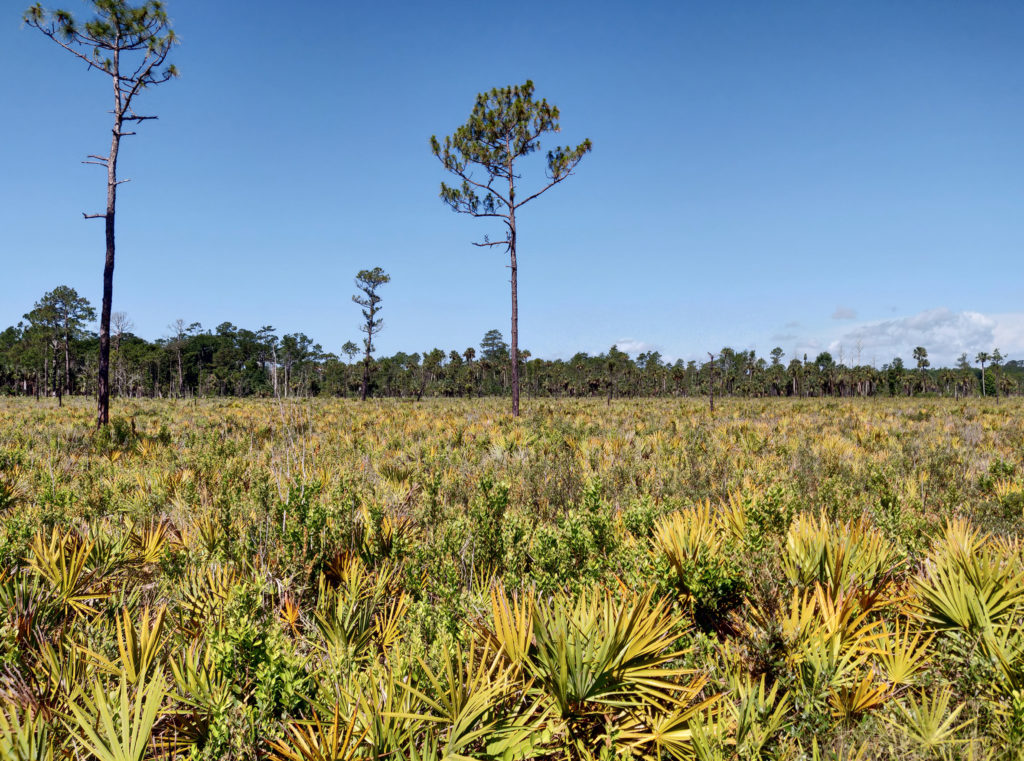
Mesic flatwood habitat. A habitat that is characterized with inundation-prone soils. © Leo Ohyama
How many studies have set out to test a hypothesis relating to species interactions, using species that live both above and below ground, yet collected data only on the aboveground portion of the interaction? Even in studies that set out to examine an underground behavior or process, serious experimental modifications must often be made in order to collect data. Often, this involves excavating or bringing organisms into a laboratory setup with specially built habitat designed for observation.
Myrmecologists are particularly aware of the underground blind spot, because so much of the life of the colony can occur there. I’d like to think that among biologists, we’ve an above-average job of figuring out clever ways to probe the subterranean darkness (or at least simulate the underground environment well enough to accept behavioral observations made in the lab) (Topoff & al. 1988, Roces & Kleineidam 2000, Berghoff & al. 2002, Cassill & al. 2005, Moser 2006, Andersen & Brault 2010, Schmidt & Solar 2010, Tschinkel 2010, Greene & al. 2013, Baudier & O’Donnell 2016, Wong & Guénard 2016, Wong & Guénard 2017) (https://www.bbc.co.uk/programmes/b013cj7q). However, the number of studies probing some aspect of subterranean ant activities are still dwarfed by aboveground work, and for most species we have little or no information about their behavior and ecology below the surface. The situation is even worse for ant species with strictly subterranean (hypogaeic) lifestyles; in some cases, we only know that they exist from encountering their reproductive caste (https://www.antweb.org/description.do?name=Bregmatomyrma&rank=genus&project=allantwebants; http://www.antwiki.org/wiki/Aenictus_alluaudi )

Solenopsis pergandei tumuli. These tumuli soil formations are created to allow the release of S.
pergandei alate sexuals during their mating season. Often found in the early mornings after a night of
moderate to heavy rain. Mating flights occur usually an hour to 30 minutes before sunrise. This specific
tumulus has slightly lost structural integrity as much of the morning had already passed when it was
found. © Leo Ohyama
The recent Myrmecological News paper by Leo Ohyama, Joshua King, and David Jenkins (2018) thus provides a welcome addition to our knowledge of subterranean ant biology. They focus on the abundant yet mysterious thief ants (genus Solenopsis). These ants are tiny, and most are probably lestobiotic. Miriam Webster defines this term as “cleptobiosis in which covert thievery replaces aggressive plundering.” I don’t know how we would demonstrate that “aggressive plundering” ever occurred in the lineage of thief ants, but their small size makes them excellently equipped for covert thievery. Essentially, we think that they burrow into the nests of larger ant species and steal the brood. They escape back into their tiny tunnels where they can’t be pursued, if they were ever noticed to begin with. It’s rather like the legends of little faeries and elves stealing babies, except that no changelings are left in the brood’s place. Of course, our knowledge of thief ant lestobiotic behavior is fairly limited because it’s impossible to observe in situ without serious disturbance of the host nest. Are all thief ants even lestobiotic? We don’t really know.

Solenopsis fugax. © Birgit Schlick-Steiner & Florian Steiner
Ohyama, King, and Jenkins investigated thief ants in Florida sandhill and pine flatwood habitats. They focused on answering some very basic ecological questions in their study: What subterranean species are present? Does species composition vary with habitat type? Are species diversity and occurrence related to basic abiotic factors like soil composition, moisture, and temperature? They also had previous data from a surface-level pitfall trapping study to look at co-occurrence of thief ants with other ant species.
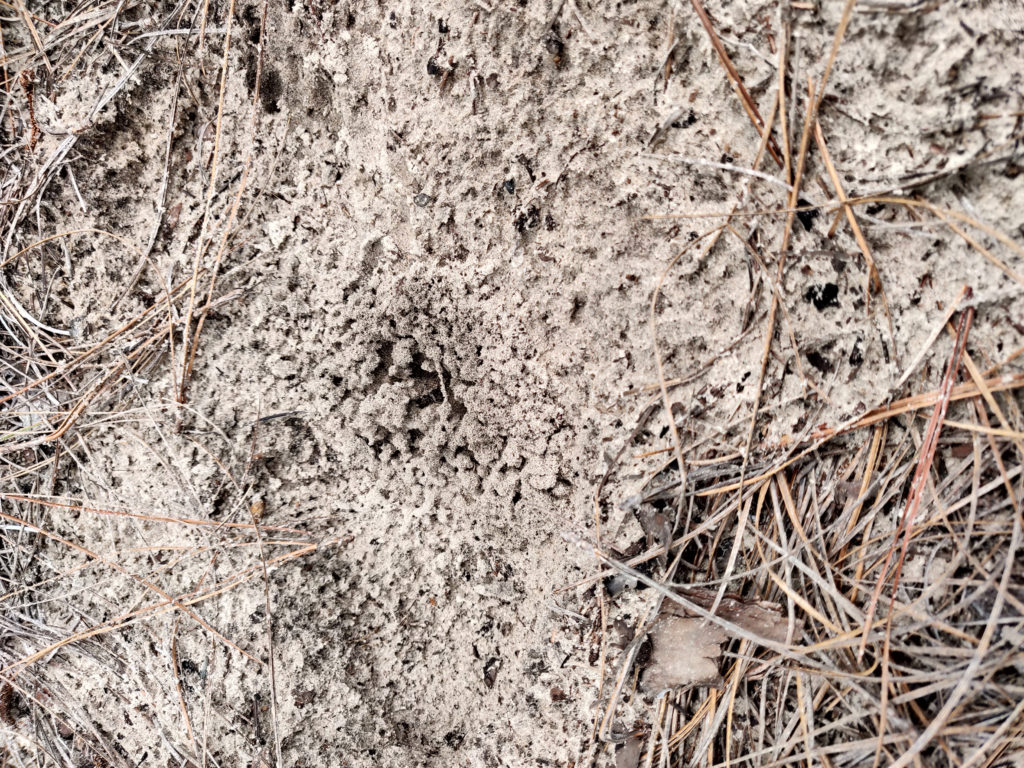
Another Solenopsis pergandei tumulus with less deterioration. Out of all thief ants in Florida, S.
pergandei is the only one known to create these soil formations. However, finding queens or brood
chambers from the tumuli can be quite difficult as the main chambers of the colony’s nest are not
conspicuous and are often connected to the tumuli by tunnels only a few grains of sand in diameter. © Leo Ohyama
In order to sample the subterranean ant community, they used buried bait stations constructed from plastic vials and fine screen. Ants traveling underground encounter the vial, climb through the screen to reach the bait, and are retrieved when the researchers dig it back up. I’ve tried a version of this method before using oil and tuna to attract subterranean army ants in a very rocky area, and I have to say I’m quite envious of the sandy soil these researchers had to work with.
The most striking result is also quite simple: hypogaeic thief ants at this site are very abundant. In fact, 64% of all the ants they caught were thief ants, and 70% of the traps contained Solenopsis. There were five species of thief ants, as well as a few small Solenopsis invicta that managed to squeeze through the screens on the traps. Some of these species are strictly subterranean, while others seem to use the leaf litter as well. Habitat and abiotic factors did seem to play a role in diversity and occurrence, providing many useful leads for further investigations of the ecology of these species.
To me, the most exciting line in the paper comes near the end: “If thief ants are truly lestobiotic, then their widespread abundance, now shown by three studies in Florida (including this one), suggests potential for substantial effects on co-occurring ants, including direct and indirect effects via brood raiding and generalist predation (Thompson 1980, Buren 1983, Lammers 1987, Nichols & Sites 1991, Yamaguchi & Hasegawa 1996, Vinson & Rao 2004).” How much of what we see aboveground in ant communities is really driven by interactions below?
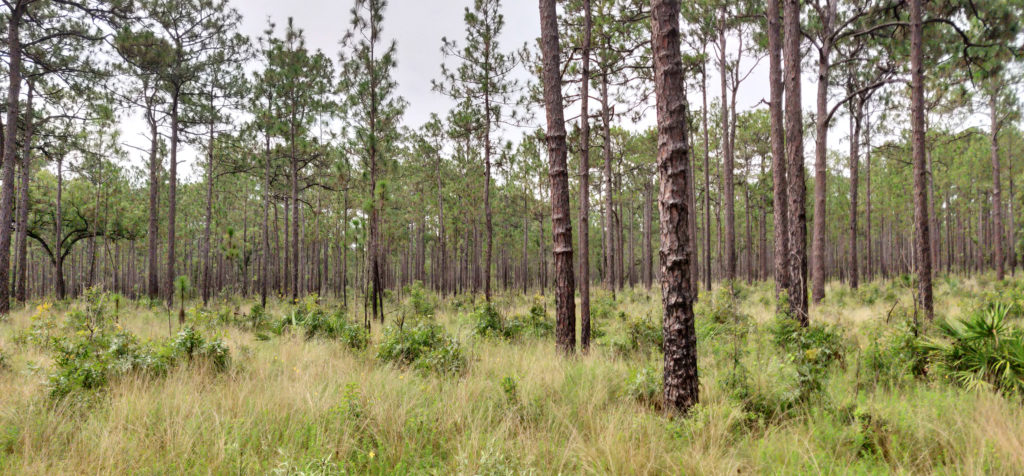
Sandhill habitat. This habitat is characterized by well-drained sandy soils that help prevent
inundation events during heavy rain. © Leo Ohyama
After reading this paper and the recent review of subterranean ants and methods for studying them by Mark Wong and Benoit Guénard (2017), I’m looking forward to seeing the word hypogaeic occur more frequently in the keywords of ant papers. Now if you’ll excuse me, I need to go drill a bunch of holes in some plastic tubes.
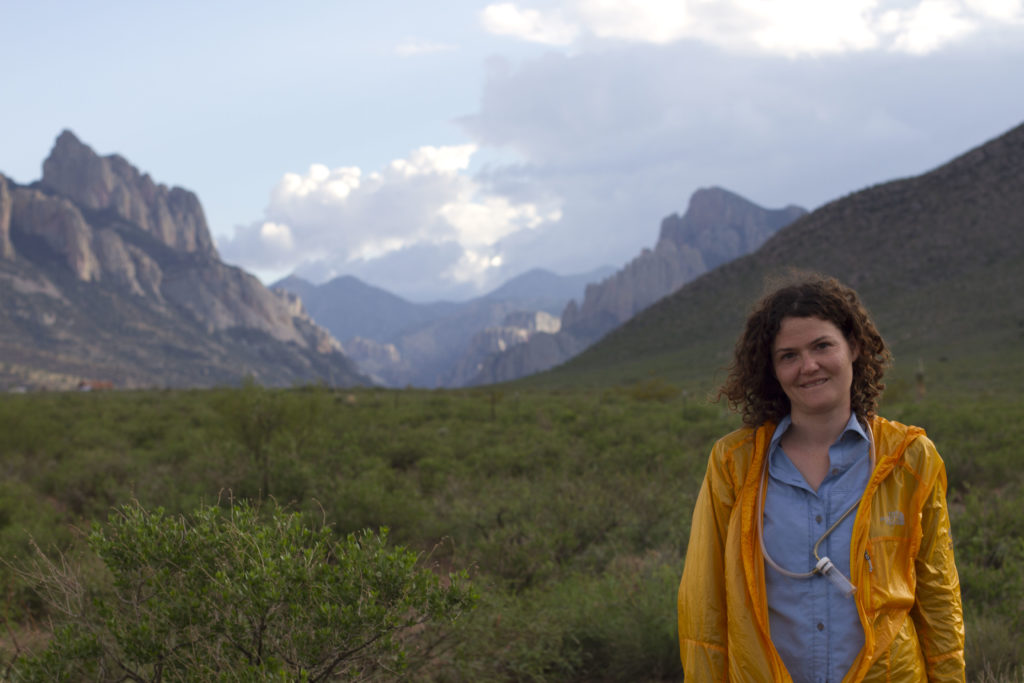
© Michele Lanan
Still not enough? Check out the video on Solenopsis pergandei workers and alate sexuals after digging up a tumuli formation. Large numbers of workers can be caught in just a shovel-full of soil. © Leo Ohyama
References
Andersen, A.N. & Brault, A. 2010: Exploring a new biodiversity frontier: subterranean ants in northern Australia. – Biodiversity Conservation 19: 2741-2750.
Baudier, K.M. & O’Donnell, S. 2016: Structure and thermal biology of subterranean army ant bivouacs in tropical montane forests. – Insectes Sociaux 63: 467-476.
Berghoff, S.M., Weissflog, A., Linsenmair, K.E., Bin Hashim, R. & Maschwitz, U. 2002: Foraging of a hypogaeic army ant: a long neglected majority. – Insectes Sociaux 49: 133-141.
Buren, W.F. 1983: Artificial faunal replacement for imported fire ant control. – The Florida Entomologist 66: 93-100.
Cassill, D.L., Butler, J., Vinson, S.B. & Wheeler, D.E. 2005: Cooperation during prey digestion between workers and larvae in the ant, Pheidole spadonia. – Insectes Sociaux 52: 339-343.
Greene, M.J., Pinter-Wollman, N. & Gordon, D.M. 2013: Interactions with combined chemical cues inform harvester ant foragers’ decisions to leave the nest in search of food. – Public Library of Science One 8: art. 8.
Lammers, J.M. 1987: Mortality factors associated with the founding queens of Solenopsis invicta Buren, the red imported fire ant: a study of the native ant community in central Texas. – M.Sc. thesis, Texas A&M University, College Station, TX, 206 pp.
Moser, J.C. 2006: Complete excavation and mapping of a Texas leafcutting ant nest. – Annals of the Entomological Society of America 99: 891-897.
Nichols, B.J. & Sites, R.W. 1991: Ant predators of founder queens of Solenopsis invicta (Hymenoptera: Formicidae) in central Texas. – Environmental Entomology 20: 1024-1029.
Ohyama, L., King, J.R. & Jenkins, D.G. 2018: Diversity and distribution of Solenopsis (Hymenoptera: Formicidae) thief ants belowground. – Myrmecological News 27: 47-57.
Roces, F. & Kleineidam, C. 2000: Humidity preference for fungus culturing by workers of the leaf-cutting ant Atta sexdens rubropilosa. – Insectes Sociaux 47: 348-350.
Schmidt, F.A. & Solar, R.R.C. 2010: Hypogaeic pitfall traps: methodological advances and remarks to improve the sampling of a hidden ant fauna. – Insectes Sociaux 57: 261-266.
Thompson, C.R. 1980: Solenopsis (Diplorhoptrum) (Hymenoptera: Formicidae) of Florida. – Ph.D. thesis, University of Florida, Gainesville, FL, XI + 115 pp.
Topoff, H., Cover, S., Greenberg, L., Goodloe, L. & Sherman, P. 1988: Colony founding by queens of the obligatory slave-making ant, Polyergus breviceps: the role of the Dufour gland. – Ethology 78: 209-218.
Tschinkel, W.R. 2010: Methods for casting subterranean ant nests. – Journal of Insect Science 10: art. 88.
Vinson, S.B. & Rao, A. 2004: Inability of incipient Solenopsis invicta (Hymenoptera: Formicidae) colonies to establish in a plot with a high density of Solenopsis (Diplorhoptrum) colonies. – Environmental Entomology 33: 1626-1631.
Wong, M.K.L. & Guénard, B. 2017: Subterranean ants: summary and perspectives on field sampling methods, with notes on diversity and ecology (Hymenoptera: Formicidae). – Myrmecological News 25: 1-16.
Wong, M.K.L. & Guénard, B. 2016: Leptanilla hypodracos sp. n., a new species of the cryptic ant genus Leptanilla (Hymenoptera, Formicidae) from Singapore, with new distribution data and an updated key to Oriental Leptanilla species. – Zookeys 551: 129-144.
Yamaguchi, T. & Hasegawa, M. 1996: An experiment on ant predation in soil using a new bait trap method. – Ecol. Res.: 11: 11-16. Erratum published in Ecological Research 12: 109.


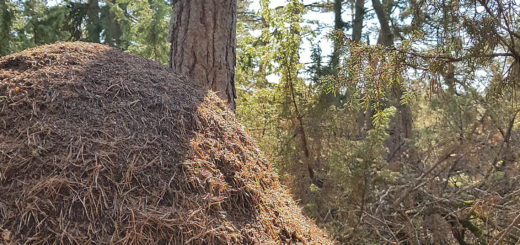

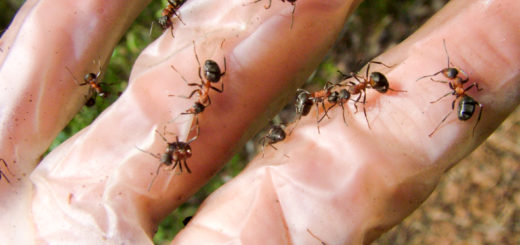
Thanks Michele, for highlighting this super interesting paper.
It is a great example of the streetlamp effect. If you want to discover something new and amazing, go look where other people aren’t. Yeah.
https://en.wikipedia.org/wiki/Streetlight_effect
Back when I was a grad student in Florida, fellow W.F. Buren grad student Catherine Thompson sampled a variety of Florida habitats with these buried traps as a method of acquiring specimens for her dissertation and later-published revision of the Florida “Diplos” (small Solenopsis). We also used them for sampling hypogaeic ants in Mato Grosso, Brazil as an aspect of studies by Buren and Jerry Stimac on ecology of fire ants in their homeland, where there was less dominance by Solenopsis, but still plenty of them and almost certainly numerous undescribed ones among those we did get, likely in other genera, too. Samples are now at MZUSP, and a more concerted effort further to sample the hypgaeic micro-ants in the Neotropics (and elsewhere) would undoubtedly reveal many previous unknown myrmecological treasures.
(There you go Michelle, I used the new popular search term twice. )
Dear Michelle, thank you so much for sharing our research, and good luck with capturing some hypogaeic species! Here’s a tip for you and anyone who may be interested: using small vials (2 ml) as subterranean pitfall traps may be a pretty efficient method because they can often quickly be inserted into the soil without digging (simply use a stick to plunge a hole in the ground, then pop them in!). Bigger traps will require substantially more digging. I just tried these small ones while on Ant Course in French Guiana, and collected 9 Cryptopone in a single trap (; Of course there are several other technical considerations when sampling underground ants (e.g., time, baits), and for this, please refer to our review. Cheers.